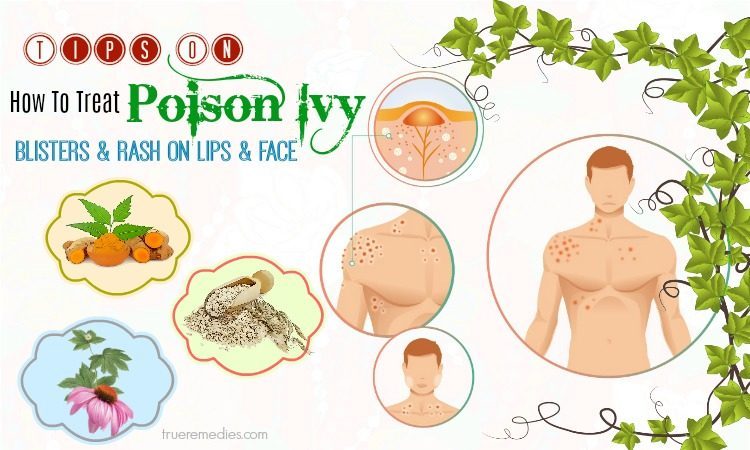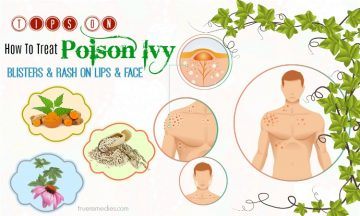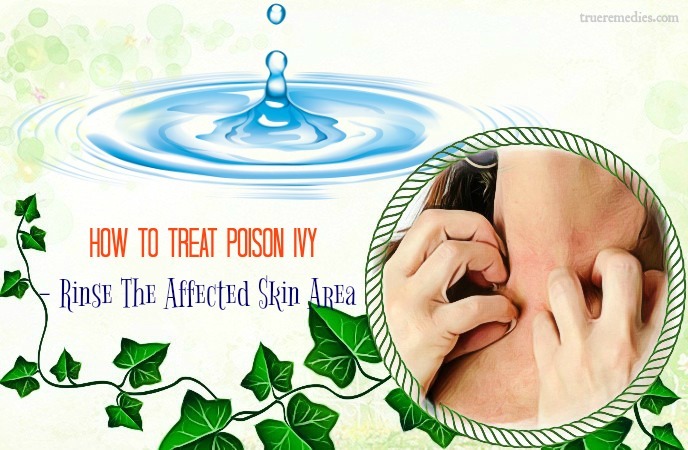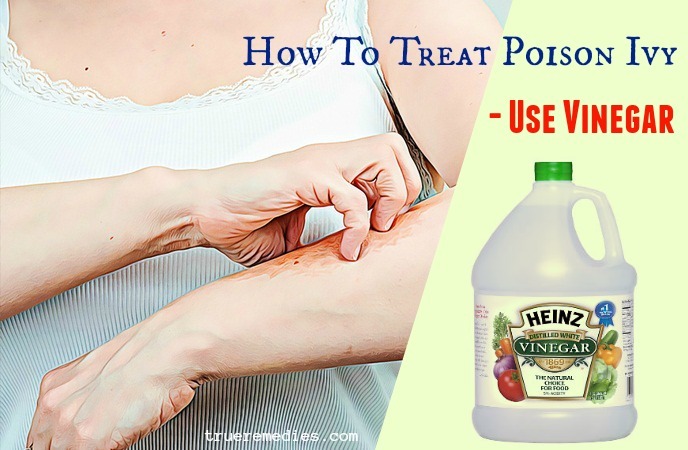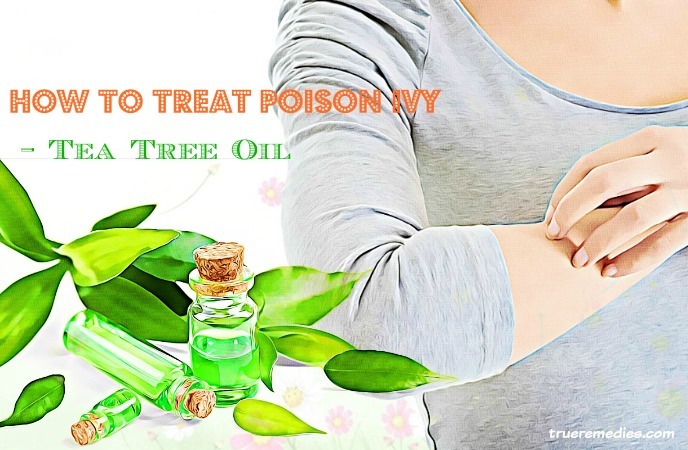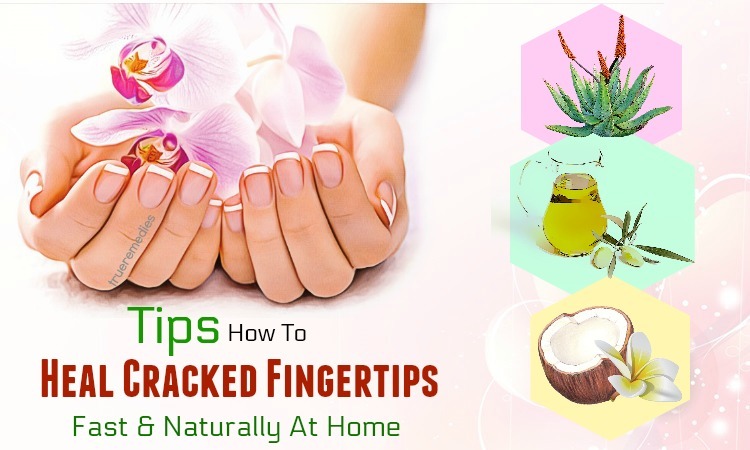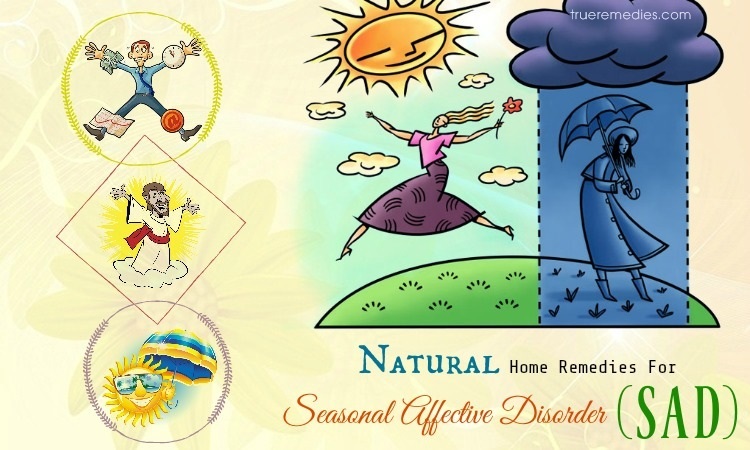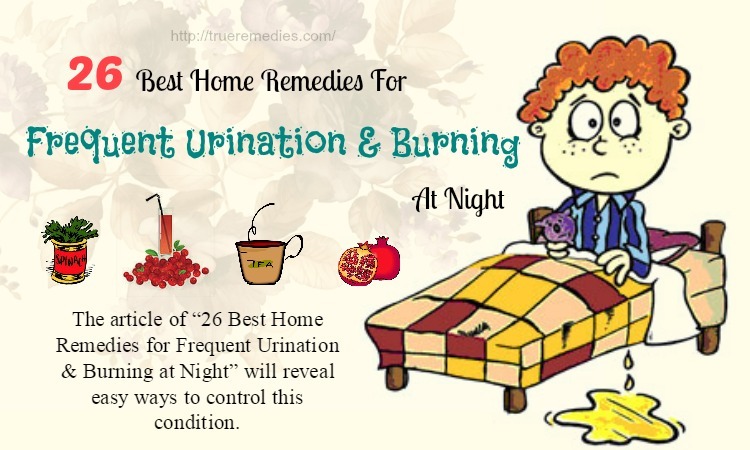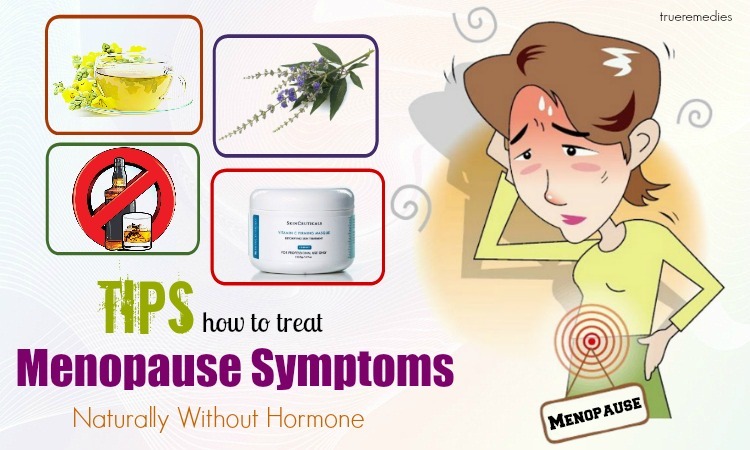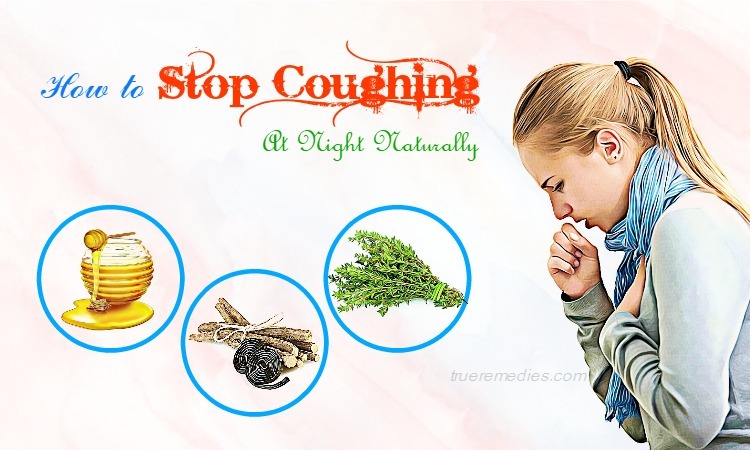updated: 06/20/2019
Contents
Like oaks and ferns poisoning, ivy poisoning can make your outdoor activities worse. It is estimated that about 85% of people are sensitive to oils found in poison ivy plant [1]. Exposure to toxic leaves, stems and roots of this plant can cause rash and itching which last 1-3 weeks. Although waiting is one way to get rid of the rash, you can still relieve the pain and itching because of exposure to this poisonous plant in many ways.
Understanding the cause and symptoms is one of the first things you need to prevent as well as treat this problem. This article will help you do that. In addition, very useful tips will be introduced to you to treat poison ivy quickly. Please do not ignore any of the information below as it is really important.
What Is Poison Ivy?
Poison ivy grows in North America, Canada and Mexico. In some Asian countries such as Japan, Taiwan, Russia and China, this plant also appears. If you know this plant well, you will not plant it in your house. However, poison ivy can grow anywhere, in the forest, on the grassland, on the side of the road, along the river, in the park, and in the garden in the form of vines wrapped around large trees.
One of the most common allergic conditions that many people experience is allergy to poison ivy. Allergy is a condition in which your immune system reacts excessively to non-harmful substances. Allergic substances are different from each other and often have genetic factors that affect them. Statistical studies have shown that children whose parents have allergies are more likely to suffer from this condition than other children. Many hypotheses about the cause of allergies are given as factors of small intestinal infection and vitamin D deficiency. However, these hypotheses have not been strongly confirmed [2].
Resin of the stem and leaves of the poison ivy have a compound called urushiol, which causes allergies. When touching its resin, your body will have some signs like blisters, rashes, and itching. The rashes do not spread and usually go away for 1-3 weeks. In most cases, you can treat yourself at home. However, you should not ignore some cases of severe allergies which cause necrotizing limbs. This is so scary!
TrueRemedies Partner Solutions

Need a Help from the Leading Expert Online, Available 24/7?
They’re all here and ready to answer your questions online or by phone. Keep asking questions until you get the answer you need.
In the United States, poison ivy allergies are most common in the Midwest and the East, but can be found throughout the country, except in the southwest, Alaska and Hawaii. Even if you touch the objects that come in contact with poison ivy, such as a ball, gardening tools, or a pet, you may also be allergic. Fortunately, the poison ivy itself is not contagious. You cannot use any medication to treat an allergic reaction caused by poison ivy. However, you can still relieve the pain and itching because of exposure to this poisonous plant in many ways.
What Are Common Causes Of Poison Ivy?
Poison ivy contains an irritant oil called urushiol. About 85 percent of the population is allergic to urushiol, making it be the most common allergy in the country. No one is born with an allergy, and exposure to this plant causes sensitivity to it. In other words, your body experiences negative reactions after repeated exposure to this poisonous plant. So you may have been in contact with poison ivy many times without being affected, but you may be allergic in the next time you contact with it. Urushiol is contained in the resin of the leaves, stem and roots of poison ivy, and only a very small fraction of urushiol can cause an allergic reaction. Because stress relieves the immune system, it sometimes causes you to be more allergic to poison ivy than usual.
Most cases of allergies with poison ivy occur in the spring and summer. These are the seasons where the resin is plentiful. Poison ivy has many thorns which easily cause scratches. This does not mean you cannot be allergic to poison ivy in other seasons of the year. Therefore, you should always be careful with this plant.
What Are Common Symptoms Of Poison Ivy?
Here are common symptoms of this condition:
- The symptoms usually appear about 12 to 48 hours after you are exposed to resin of poison ivy, or they may appear after a week
- Your skin will become flushed and hardened within a few days
- Skin is itchy and swollen
- Appears the blisters on the skin
- You may have chicken pox
- You may have a fever
- The symptoms will gradually disappear after 1-3 weeks
You may experience other symptoms not mentioned. If you have any questions about the signs of the disease, please consult your doctor.
Who Is At High Risk Of This Problem?
Anyone can get into this situation. As we mentioned above, almost everyone is allergic to urushiol in the resin of poison ivy, so if you are exposed to the resin of this plant, you are more likely to suffer from allergic symptoms.
In accordance with the University of Connecticut Health Center, some tools and materials that may harbor the urushiol oil around our houses include [3]:
- Gardening equipment, such as shovels or gloves
- Pet fur
- Garden shoes
- Doorknobs
- Sports equipment
- Cotton clothing, socks, shoes, hats or other clothing
- Furniture
- Smoking that burns from poison ivy plants may also release urushiol, which could be inhaled and lead to a reaction in people.
Other risk factors for a poison ivy rash are [4]:
- Have a family history of developing allergies to the plant or had reactions in the past.
- Having a weakened immune system because of other medical conditions such as autoimmune disorders or a history of extreme allergies
- Having sensitve skin
- Weeding using the weeder cutting up and spraying out plants. This may lead to splattering of poison ivy’s oil on your clothes or skin.
You can control this problem by minimizing risk factors. Please see your doctor for more information.
Is Every One Allergic To Poison Ivy?
There is just a small group of lucky people who will not react to poison ivy exposure without symptoms. Nonetheless, the majority of people will. Fortunately, doctors and experts believe that if you come into contact with this plant more regularly, your risk of developing skin rash will be lowered. A person with strong immune system will be able to tolerate to poison ivy’s oil better.
When To See A Doctor?
You should see a doctor, especially if you are not sure that the cause of the rash on your body is poison ivy. If you know the culprit is poison ivy and decide not to rush to see a doctor, you need to monitor your condition very carefully. During the course of treatment, if any of the following signs occur, you should seek immediate medical attention to avoid any serious consequences:
- The rash is getting worse
- Signs of infection (with the appearance of pus)
- Rash on the face or genitals
- High fever
- The rash lasted for more than two weeks without any sign of decline
If your rash is severe enough, your doctor may order you to take oral antihistamines or oral steroids to prevent inflammation and relieve itching.Besides, if you have any of these signs or symptoms or have any questions, please consult your doctor. Each person's condition is different, so please consult your doctor to select the most suitable option.
Above are some basic information about poison ivy. Hopefully with this information, you may have the most comprehensive view of this problem. Here are tips on how to treat poison ivy blisters and rash on lips and face so you will feel more comfortable. Please take a look at TrueRemedies.com!
Top 28 Tips On How To Treat Poison Ivy Blisters & Rash On Lips & Face
1. Rinse The Affected Skin Area
This is the first home remedy in this list of tips on how to treat poison ivy blisters. Proper skin hygiene is important so clean your affected area with clean water for 1-2 hours after exposure to poison ivy (as soon as possible). If you suspect that you have been exposed to poison ivy, even if your skin does not have any reaction, you should also look for fresh water to wash away the skin you have exposed to poison ivy.
It is possible that as soon as you touch poison ivy, you will get a rash. Wash the affected skin areas in cold water and be careful not to touch the skin rash. Find water as cold as possible because cold water helps to tighten pores on the skin, wash away urushiol oil instead of letting the oil penetrate the body. Absolutely do not use hot water at this time as hot water dilates the pores, allowing urushiol oil to enter the body and causing the allergic reaction to become more severe.
Poison ivy is an oil so you can not eliminate it completely with water. Therefore, if possible, you should use dishwashing soap which has the effect of decomposing oil to wash the skin rash. Dishwashing will help to prevent toxins from spreading and reducing rash. If you are exposed to poison ivy when you are near the beach, you can use some wet sand to rub into the affected skin and soak the skin into the sea. To rinse urushiol oil, you should only wash the skin which is in direct contact with poison ivy. Do not bathe your body as this will cause the rash to spread throughout other parts of your body.
2. Apply A Little Isopropyl Alcohol
This is another must-try treatment in this list of tips on how to treat poison ivy blisters. Cleansing your skin with cool water is the first thing you need to do when you think (or know) that you've been exposed to poison ivy. After washing with cool water or if you haven’t fresh water, you can pour a few Isopropyl alcohols on the cotton pad and apply it to the skin rash. Applying alcohol to the skin can help prevent toxins from spreading and prevent the rash from getting worse. Carry out this step as soon as possible to prevent the rash from spreading and help to shorten the course of treatment.
3. Apply Cold Packs
This remedy is one of little – known tips on how to treat poison ivy blisters. Tightened pores will prevent skin from absorbing urushiol oil. You can apply a cold pack or ice cubes to the skin rash to tighten skin pores. This also helps to soothe the blisters, making you feel better.
4. Take Off Clothes Which Have Been Exposed To Poison Ivy
The next treatment in this list of tips on how to treat poison ivy blisters is taking off clothes which have been exposed to poison ivy. Touching clothes that have oil from poison ivy can cause the rash to spread to other parts of the body. So, you need to take off the clothes you wear and wash them right away (separate laundry with other clothes).
5. Use Jewelweed
If you're outdoors, you can find the Jewelweed – a tree that usually grows near poison ivy. The use of this plant is a natural way of treating rash caused by poison ivy. Jewelweed is a shrub and usually grows low. Their flowers are bell-shaped and yellow and orange. It has saponins that can help with drying out the liquid-filled affected areas and soothe the inflammation and itching [5] [6] [7] ………… As soon as you find it, grind a few leaves to form a mixture and apply it to the rash. Leave it on the skin for as long as possible and apply a new layer when the old one is dry. It will make you feel more comfortable, and also make the rash improved.
6. Use Baking Soda
This sounds strange when it comes to tips on how to treat poison ivy blisters, but it works. Baking soda is alkaline and has pH neutralizing effects. Thus, it can restore the pH level of your affected skin and increase the healing process. Its antibacterial properties also protect the skin rashes . further infection. This popular kitchen material helps to draw toxins in the skin and soothe the rash [8]. To do this, please follow these steps below:
- Mix baking soda with a little water to create a thick mixture
- Apply this mixture to the skin rash
- When the mixture is dry, remove it with cool water
You can do this tip several times a day until the rash disappears.
7. Use Vinegar
The next one in this list of tips on how to treat poison ivy blisters is using vinegar. Vinegar has many miraculous benefits, including helping to heal the rash caused by poison ivy. You can put the white vinegar or apple cider vinegar on the rash and leave them on the skin until they evaporate. Or you can put the vinegar on a cotton swab and apply it to the rash so that the vinegar is properly exposed to the rash. Surely you will be surprised about the results that this tip gives you [9].
8. Use Cold Coffee
Yes, you can completely use the coffee to rescue yourself in this case. This tip is very simple. All you need to do is making a cup of regular coffee and wait for the coffee to cool or let it cool down in the refrigerator. Then, pour coffee over skin rashes or use a cotton swab to apply coffee to skin rash. Leave the coffee on the skin until it evaporates. Coffee contains an acid that has an anti-inflammatory effect, thereby relieving the rash and reducing redness. You can apply this tip several times a day until your condition is completely improved.
9. Use Oatmeal
No wonder, this is definitely one that should be mentioned in this list of tips on how to treat poison ivy blisters. Oatmeal has long been used as an emollient. It can be added to a bathtub for soaking and relaxing. You can buy oats to bathe or mash a regular cup of oatmeal and pour it into a bath filled with warm water. Soak in oat water for about 20 minutes to reduce itching due to rash [10] [11].
You can also use oats to treat poison ivy by the following way:
- Wash the skin exposed to poison ivy with dishwashing liquid Dawn Dish or other brands which have the effect of decomposing the oil
- Wash your skin with warm water, and then with cool water to tighten the pores
- Once the skin is dry, apply a little hazelnut water to the skin
- Pour oats into a sock and dip it in hot water for 2-3 minutes
- Squeeze the socks and apply it to the skin rash
Do this as soon as you find out you have been exposed to poison ivy. Besides, you should also do this 1-2 times a day until your condition is completely eliminated. Oatmeal helps soothe the affected skin and help your treatment to be shortened. Hazelnuts have astringent properties, so when applied to the skin, it will help tighten pores and reduce itching. You can apply hazelnuts to the rash 2-3 times a day to promote the recovery of the skin after exposures to poison ivy.
10. Use Black Tea
This is another must-try treatment in this list of tips on how to treat poison ivy blisters on face. Let’s add 6-8 teaspoons of hot tea to the tub. Black tea contains tannic acid. It is an anti-inflammatory agent that helps soothe the rash caused by poison ivy. Soak in tea for about 20 minutes for the best results.
Alternatively, you can also make a very strong infusion of comfrey, plantain, and burdock root, then dip a cloth in to the infusion and apply over your affected area for 10 minutes to get rid of poison ivy.
11. Take Advantage Of Echinacea
You can use this herb in the form of a tincture or supplement to reduce the reactions of histamine. Simply mix 1 part of echinacea in the tincture form with 3 parts of water. After that, apply this mixture over your affected skin a few times per day using a compress.
12. Bentonite Clay
One of great summertime use of bentonite clay is treating poison ivy. Bentonite clay has up to 50 trace minerals, including possium, calcium and magnesium. It may be best known for eliminating toxins, yet externally gives a plethora of benefits. If made into a poultice, it could relieve itching, soothe burns and protect from poison oak and poison ivy. The reason is because this ingredient provides a shield against urishol, an irritating oil found in plants that causes the reaction.
- Mix ¼ cup each of warm olive oil (or grapeseed oil) and warm water. Bentonite clay
- Add some bentonite clay into till you get a thick paste
- Apply this mixture generously over your affected area
- Wrap a piece of thin, light cotton or gauze around it
- After 3-4 hours, wash it off with warm water
- Reapply if necessary
13. Turmeric
One of the most effective tips on how to treat poison ivy on face and lips naturally is using turmeric powder. It is known to be a strong anti-inflammatory and antibacterial and will help reduce irritation, itch and swelling.
What you have to do is mixing 1 tablespoon of turmeric powder with a small amount of lemon juice (rubbing alcohol or vodka) to create a spreadable paste. Apply this mixture over your affected areas and rinse it off with 20 minutes. Repeat this routine as often as you need.
Note: If you use rubbing alcohol, do this method up to 3 times per day.
14. Witch Hazel
Considered an old treatment for poison ivy, witch hazel can work as well as it used to do long ago. This herb can dry out the blisters, so you can spray it over your rash liberally and let it dry naturally.
15. How To Treat Poison Ivy – Potato
Blend a raw potato till it creates a paste. Then, put the paste on a plastic wrap or a clean cloth. Wrap it around your affected area. Wait for a few hours before washing it off.
16. Drink Red Beet Juice
Boil fresh beets (add some sea salt if you want) till softened, then drink this juice. In fact, beets are a natural blood cleaner and can prevent poison ivy from turning into a systemic case needing steroids.
17. Epsom Baths
In case that your poison ivy condition is widespread, you can take advantage of Epsom salt baths. This is a time-tested aid. Epsom salts have anti-inflammatory properties and help to relieve itchiness [12]. Add 1 cup of Epsom salt to hot water (bearable) to harness its merits. The magnesium sulfate is absorbed by the skin, thereby reducing inflammation and calming to your body and mind [13].
18. Essential Oils
Applying essential oils topically can relieve allergies and poison ivy symptoms. Some examples are helichrysum, lavender, rose and geranium oil, which help to lower inflammation and improve rashes.
- Add 3 drops of the oil to a compress
- Apply it over your affected areas thrice per day
Note: For those with sensitive skin, mix that oil with ½ teaspoon of coconut oil to dilute it and decrease its strength.
19. Use Antihistamine Drugs Sold At Pharmacies
This drug is used to treat mild allergic reactions with non-progressive symptoms. You can choose one of several medicines. You should keep this medicine available at home in case you have an allergy. Always take the medicine as directed on the label. Here are some common medications:
- Benadryl
This is a common drug that can help with allergies including fast-acting urticaria. You can use this drug with food. When using this drug, you should drink a glass of water to help the drug works best. Do not take more than 300mg of Benadryl within 24 hours as this can lead to overdose. Note that Benadryl usually causes drowsiness, so be careful when driving or operating machinery. If you feel sleepy, you need to suspend these activities.
- Claritin
Although used to treat urticaria, this drug also works to treat blisters caused by poison ivy. You can combine this drug with food or not. This drug does not cause drowsiness, but it still has side effects, so you need to monitor your condition before driving or operating machinery. You should only drink Claritin once a day.
- Zyrtec
You can use 5-10mg Zyrtec per day and can mix it with food or not. Possible side effects of this medication include confusion or loss of consciousness, so be careful while driving. It is best not to use Zyrtec when you are not indoors.
- Allegra
This medication is taken on an empty stomach, at least 1 hour before meals or 2 hours after meals. You should also drink plenty of fruit juice when using Allegra, as the juice can interact with the drug, helping the drug to work better. This type also causes drowsiness.
The above are non-prescription drugs, however, they can also be prescribed with a stronger effect. Talk to your doctor about the right medicine for you. Some people are allergic or sensitive to certain ingredients, so you should make sure it is safe for you.
20. Use Hydrocortisone Creams
Hydrocortisone works to reduce swelling and itching caused by poison ivy. Currently there are many hydrocortisone creams available in pharmacies. You should check their labels to ensure that the cream you use contains hydrocortisone. Hydrocortisone creams can be prescribed with many different types. If the drug is not available at the pharmacy, you should see a doctor for a stronger prescription. You can also apply a cold towel to the rash area if you do not have hydrocortisone cream.
21. Use Calamine Lotion
This remedy is one of little – known tips on how to treat poison ivy rash on lips and face. If you cannot withstand intense rash, you can try using this popular lotion. Calamine lotion is recommended by the US Food and Drug Administration FDA for poison ivy rash. You may be able to apply Calamine lotion on the skin several times a day.
22. Tea Tree Oil
This sounds strange when it comes to tips on how to treat poison ivy blister, but it is very effective. Pure tea tree oil has anti-inflammatory properties, so it helps reduce redness when applied to the rash. You can apply tea tree oil to the skin several times a day or when you feel itchy to improve your condition.
23. Use Sulfur Of Betel Grass
The next one in this list of tips on how to treat poison ivy blisters is using sulfur of betel grass. On the banks of rivers or streams you can find betel grass which is white or blue, but it is better to look for white. Sulfur will suck the green color of grass and turn grass into white. Sulfur is a mineral that can break down oils from poison ivy. Apply betel grass on the rash 2-3 times a day or when itching is a very good way to help you quickly treat your condition.
24. Use Aloe Vera
No wonder, this is definitely one that should be mentioned in this list of tips on how to treat poison ivy blisters. Aloe Vera looks like a cactus. It contains a gel that is used to treat sunburn. Aloe Vera gel reduces the feeling of burning and itching, similar to the itching caused by poison ivy. You can buy Aloe Vera gel at a pharmacy (make sure that this gel contains at least 95% Aloe Vera gel). Apply a layer of Aloe Vera gel on the rash and let the gel soothe the skin [14] [15] [16].
25. Be Careful With The Risk Of Anaphylaxis
Allergy to poison ivy can cause serious life-threatening respiratory and blood-flow problems. When experiencing anaphylaxis, the Red Cross recommends that you call for emergency medical attention because it is a dangerous situation. If you have a support person, you need to have them call an ambulance while you are self-treating your condition according to the tips above. If there are no helpers and you notice serious symptoms, try to do all of this quickly.
26. Wear Gloves And Comfortable Clothes Upon Gardening
Wearing gloves and comfortable clothes upon gardening is essential if you want to treat poison ivy blisters. If you wear latex gloves, it is not enough because the oil of poison ivy could penetrate the gloves. Gardening gloves are helpful in case you wash them carefully after wards with bleach or soap and water, yet there is still potential risk that the oil may make its way onto your skin via the gloves. Also, the oil can linger on the unwashed gloves as well as other equipment for a few weeks; therefore, you had better wash everything which may expose to poison ivy.
Do the same for your socks, clothes and shoes as well. Besides, remember to wear comfortable clothes as too tight clothes can rub off the rash and cause further irritation. So, you should wear loose clothing or, if possible, wear clothes that do not cover the rash, such as shorts or t-shirts. High humidity and temperature can irritate the rash so you should wear clothes which are made of cotton.
If your symptoms are severe, wearing wet clothes can be helpful. For example, you could look for a soft cotton shirt like a long sleeve or pants, soaking it in cold water, squeezing it off and putting it on. Then you need to wear loose clothing outside the wet clothes.
27. Avoid Participating In Activities That Irritate The Skin
This is the last remedy in this list of tips on how to treat poison ivy rash on lips and face During poison ivy treatment, you should avoid unnecessary skin contact and sweating. Most sports like soccer, rugby and hockey should be avoided because when you play these sports, skin contact is unavoidable. This makes your condition worse. You can still participate in aerobics, swimming and weightlifting. However, sweating can irritate the skin rash, so if you do these exercise, you should choose exercise clothes which made of cotton and you do not touch too much on the rash skin areas.
28. Apply Anti-Itch Creams
The next treatment in this list of tips on how to treat poison ivy blisters is applying anti – itch creams. Anti-itch creams do not help to decomposes oils, but they can help you not to scratch the skin rash, which causes the rash to spread. Non-scratch rash is an important factor to help eliminate the rash. You can apply anti-itching cream 1-3 times daily. Anti-itch creams are available at pharmacies.
Above are tips to help you treat poison ivy. Choose some of them and alternate them in your treating to see how effective they are. If you have any contributing ideas about our article of “Top 28 Tips On How To Treat Poison Ivy Blisters” introduced in How To Category, do not hesitate to drop your words below this post. We will answer as soon as we could.

